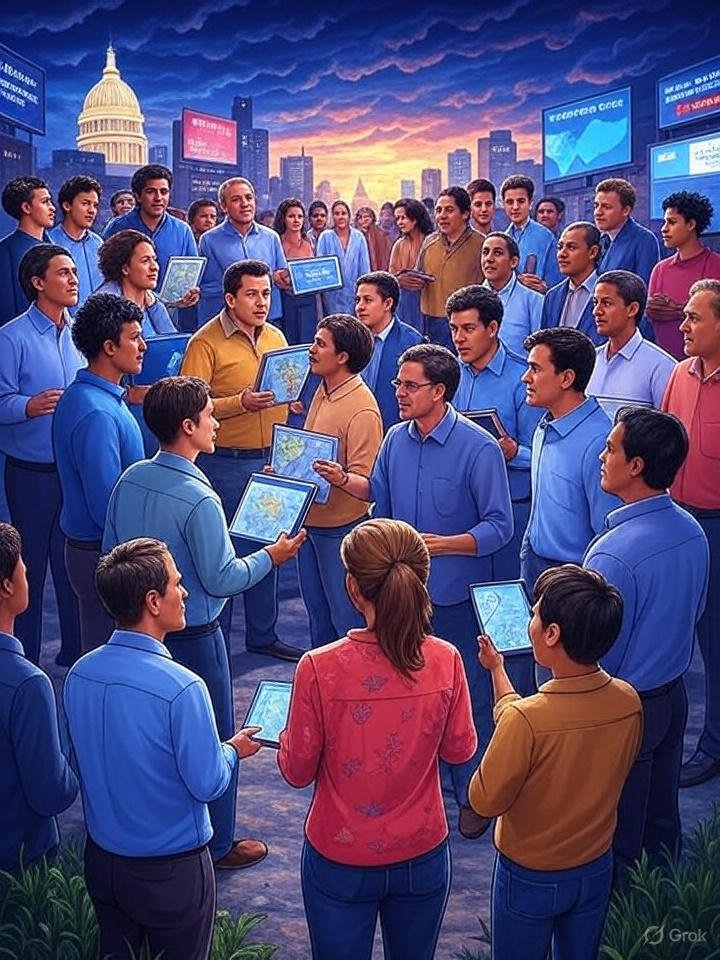Artificial Intelligence, often abbreviated as AI, is no longer confined to science fiction novels or blockbuster films. It has become an integral part of everyday life, silently powering countless tools, services, and applications we rely on. From search engines predicting what you’re about to type to advanced systems assisting doctors with complex diagnoses, AI has transformed the way we live, work, and think about the future.
This article explores the far-reaching influence of artificial intelligence—its breakthroughs, challenges, and the ethical debates surrounding its rapid expansion. More importantly, it aims to highlight why understanding this technology matters for everyone, not just engineers or computer scientists.
The Journey from Concept to Reality
Artificial intelligence has its roots in the mid-20th century when pioneers like Alan Turing laid the foundation for machines that could “think.” Early experiments involved simple problem-solving and chess-playing algorithms. While rudimentary by today’s standards, those systems provided a glimpse of what was possible.
Fast forward to today, AI has surpassed the expectations of those early pioneers. Machine learning and deep learning, two powerful subsets of AI, now enable machines to identify patterns, improve through experience, and perform tasks once thought exclusive to human intelligence. What was once theory has now become practice, and the results are visible in every industry.
Everyday Applications We Hardly Notice
For many, the idea of AI still conjures images of robots or futuristic machines. In reality, most people interact with AI every single day without realizing it. Consider your smartphone: voice assistants like Siri or Google Assistant rely on AI to interpret natural language. Similarly, music and video streaming platforms use recommendation engines to suggest content based on your previous behavior.
Beyond entertainment, AI is embedded in navigation apps that reroute traffic, email services that filter spam, and even banking systems that detect fraudulent transactions. These tools don’t merely automate processes—they adapt and respond to new data, improving continuously in the background. This invisible role demonstrates AI’s practical value and its seamless integration into daily routines.
Transforming Industries on a Global Scale
The power of AI becomes more evident when we examine its influence across entire industries. Healthcare, for example, has seen groundbreaking advancements thanks to AI-driven diagnostic tools. Algorithms can analyze medical images with remarkable accuracy, sometimes surpassing human specialists. This capability not only speeds up diagnosis but also opens the door for personalized treatments tailored to individual patients.
In finance, AI enables predictive analytics, risk assessment, and automated trading. By processing enormous volumes of data in real-time, these systems help institutions make more informed decisions. Meanwhile, the retail sector benefits from AI through smarter inventory management, personalized marketing campaigns, and customer support chatbots that can resolve issues instantly.
Even agriculture, one of the world’s oldest practices, is being reimagined. Farmers now use AI-powered drones and sensors to monitor crops, predict yields, and optimize irrigation. This not only boosts productivity but also contributes to sustainable farming practices—a pressing need in a world facing climate change.
The Rise of Generative Models
Among the most discussed breakthroughs in recent years are generative AI models. Unlike earlier systems focused primarily on recognition or classification, generative models can create new content. This includes text, music, art, and even software code. These tools are democratizing creativity, giving individuals access to capabilities that once required years of training or specialized skills.
However, the emergence of generative systems raises difficult questions. While they can accelerate innovation, they also blur the lines of originality and authorship. Who owns the rights to an image created by an algorithm? How do we ensure these models are not misused for spreading misinformation? These debates underline the double-edged nature of powerful technologies.
Ethical Challenges and Responsible Use
AI’s progress has not been without controversy. Concerns about privacy, surveillance, and bias remain front and center in discussions about its future. Algorithms trained on biased data can perpetuate inequalities, leading to unfair outcomes in areas like hiring, lending, or law enforcement. Without proper oversight, these systems risk amplifying societal issues rather than solving them.
Moreover, the growing ability of AI to monitor and predict human behavior has sparked debates about personal freedoms. Governments and companies must strike a balance between leveraging AI for efficiency and respecting the rights of individuals. Responsible development requires collaboration among technologists, policymakers, and ethicists to ensure that AI serves humanity rather than undermines it.
Jobs, Skills, and the Future of Work
Another area of concern is employment. As automation expands, many fear that machines will replace human workers. While it’s true that AI is reshaping certain job markets, history suggests that technology often creates new roles as it eliminates old ones. For instance, the rise of e-commerce introduced careers in digital marketing, logistics, and cybersecurity—positions that didn’t exist a generation ago.
The key lies in adaptation. Workers who develop skills in data analysis, machine learning, and human-computer interaction will remain in demand. Soft skills, such as problem-solving and critical thinking, will also grow in importance as machines handle repetitive tasks. Rather than viewing AI as a threat, individuals and institutions should treat it as a catalyst for re-skilling and lifelong learning.
Looking Ahead: The Path to General Intelligence
One of the most ambitious goals in the field of artificial intelligence is achieving “general intelligence.” Unlike today’s narrow AI systems, which excel at specific tasks, general AI would be capable of understanding and performing any intellectual task that a human can. While researchers have made significant strides, most experts agree that true general intelligence is still decades away.
That being said, the pursuit of this goal continues to drive innovation in algorithms, hardware, and neuroscience-inspired models. Even if full general intelligence remains distant, the advances made along the way promise to redefine how we interact with machines and how they interact with us.
Why Awareness Matters for Everyone
AI is not just a tool for scientists, businesses, or governments—it affects every individual. Whether it’s through healthcare improvements, safer transportation, or smarter homes, artificial intelligence has the potential to enhance quality of life. But without awareness and participation from the wider public, the risks of misuse increase.
Engaging in discussions about regulation, ethics, and responsible development ensures that AI evolves in a direction that benefits society as a whole. By understanding the basics, asking questions, and demanding transparency, ordinary citizens can influence how this powerful technology is used.
Final Thoughts
Artificial intelligence represents both extraordinary promise and profound responsibility. It is reshaping industries, redefining creativity, and revolutionizing the way humans interact with technology. Yet, it also brings challenges that cannot be ignored—ethical dilemmas, privacy concerns, and shifts in the global workforce.
The future of AI will not be written by engineers alone but by all of us. Through informed choices, collaborative governance, and continuous learning, humanity can ensure that artificial intelligence becomes a force for progress rather than division. The story of AI is far from finished, and its next chapters will likely be some of the most defining moments of our time.








